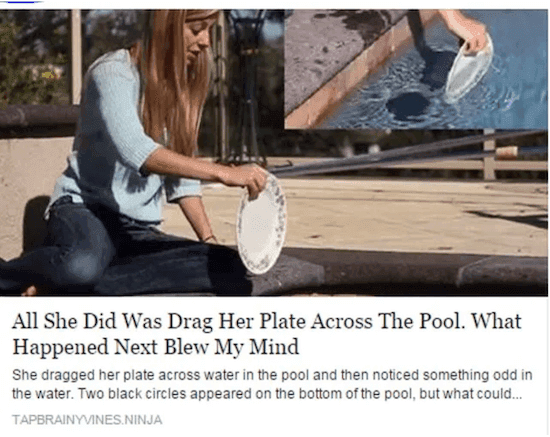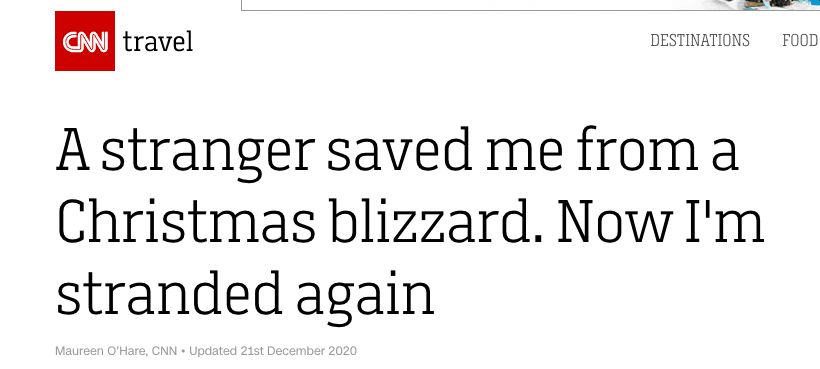Humans are naturally curious creatures — we always want to continue learning and increasing our understanding of the world around us.
This is where the psychology of curiosity gaps in your content strategy can really come in handy; if you have something that makes your audience question their knowledge about a subject or want to know more, they are bound to click to find answers.
These answers should be provided to your readers through your content. Seems easy enough, right?
Well, we want to make this tactic even easier for you. Read on to learn more about the infamous curiosity gap, how to use one effectively, and available templates to make writing headlines using them easy.
Make the Most of Your Curiosity Gap Research
Writing a headline that inspires intrigue can be tricky, but you don’t have to do it alone. We’ve compiled a downloadable file of templates you can use to create your next head-scratching headline, which is bound to pull in readers aching to satisfy their curiosity through your content.
This helpful download includes:
- 100 Headline Templates: Personalize some of these nifty headline ideas to match your brand, service, or content. You’re bound to find a few in this expansive list that are sure to spark some great headline ideas.
- A PDF of Useful Headline Words: Are you struggling to find the perfect word to complete your headline? Browse through these lists of power, emotion, uncommon, and common words to make your headline more intriguing to readers.
- A Headline Infographic: This helpful infographic is a great way for visual learners to understand why headlines are so important and how you can make your next headline impactful.
Try Out CoSchedule’s Headline Analyzer Studio
For additional help with creating the perfect headline, try CoSchedule’s trusty Headline Analyzer Studio. The Headline Analyzer Studio will give you the advice you need to boost the engagement results of your next headline — free!

Now that you have your hands full with some amazing resources, let’s dive in.
What is a Curiosity Gap?
Andrew Davis, a marketing keynote speaker, was interviewed by our Inbound Marketing Director, Ben Sailer, for CoSchedule’s Actionable Marketing Podcast to discuss curiosity gaps.
Here’s what Davis had to say about identifying a curiosity gap:
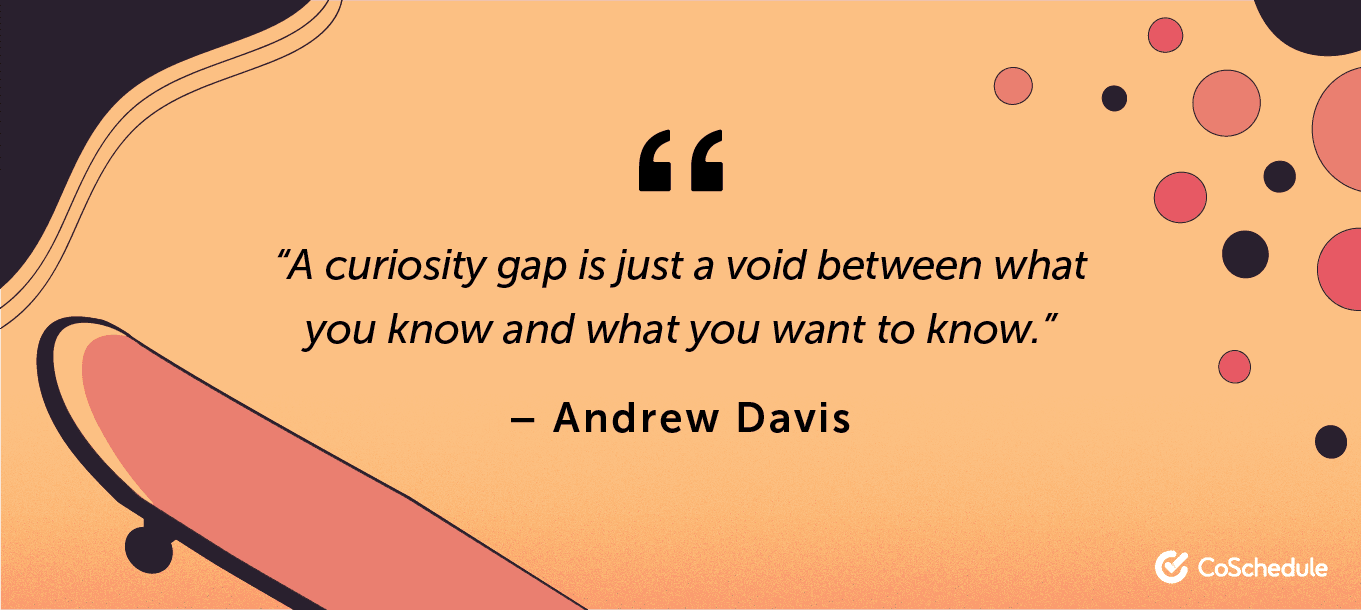
Curiosity gaps are a way to create an itch for an audience that they need to scratch — the scratch is defined as looking through your content to find an answer to something they don’t know yet. It’s very important that you provide your audience with the information they want to know, otherwise your curiosity gap is no longer a curiosity gap; it’s clickbait.
What’s the difference?
Well, clickbait typically functions similarly to a curiosity gap; however, when you offer clickbait, you don’t give your reader a concrete answer to a burning question that resulted from your content.
Here’s a great example:
In this clickbait example, you’re expecting something out of the ordinary to be waiting for you at the end of the article, but it’s something as underwhelming as a “mini-whirlpool”.
Riveting.
When you are offering answers to a curiosity gap, you are earning the trust and respect from your audience by giving them information they want to know. If you reject your audience’s request to learn more about a topic or over-hype you content, you’re bound to irritate them, drive them away, and lose their trust. We’ll touch more on this later.
How Do They Increase Traffic and Engagement?
The answer to this question is quite straightforward: if you offer your audience the answer to a burning question in their minds, they’re likely to click on your content to learn more.
Let’s break it down.
Let’s say your headline reads, “25 Hacks That Will Simplify the Way You Deep Clean”. A headline that leaves a variety of answers open to the imagination will entice your readers to try and figure out what those answers are.
What’s the easy way out of this itching curiosity? Well, checking out your content, of course — as long as you’ve kept your promise to your audience by providing them with a short and simple explanation.
Examples of Headlines That Use Curiosity Gaps
This is a good example of a headline that effectively uses a curiosity gap because the reader is given the action (“A stranger saved me from a Christmas blizzard”) and the result of said action (“Now I’m stranded again”), but this headline doesn’t tell us how we got there; that’s our curiosity gap.
McDonald’s started doing… what now? This works as a curiosity gap headline because it’s, one, attention-grabbing and bizarre, and two, the headline doesn’t give us the reason why this famous restaurant-chain started doing this bizarre thing.
Why did they start putting cameras in dumpsters? I guess I’ll have to click to settle my curiosity.
This is another good example because the headline fails to tell its readers the reason point A led to point B (a.k.a. What’s the technical glitch? Why is it happening?). However, readers will know that there is a simple solution to this problem if they just give the article a 6-minute read.
Using power words, like “simple”, boosts your chances of readers engaging with your content because it triggers action and grabs their attention.
You can find useful words like this in the offered headline template bundle, from the beginning of the post. Download this bundle now, so you can expand your curiosity gap vocabulary.
Curiosity Gaps: Do’s and Don’ts
We’ve already covered a few of the things we like to see and what we should avoid in curiosity gaps, but let’s dive a little deeper and talk about what else to watch out for.
What You Should Be Doing
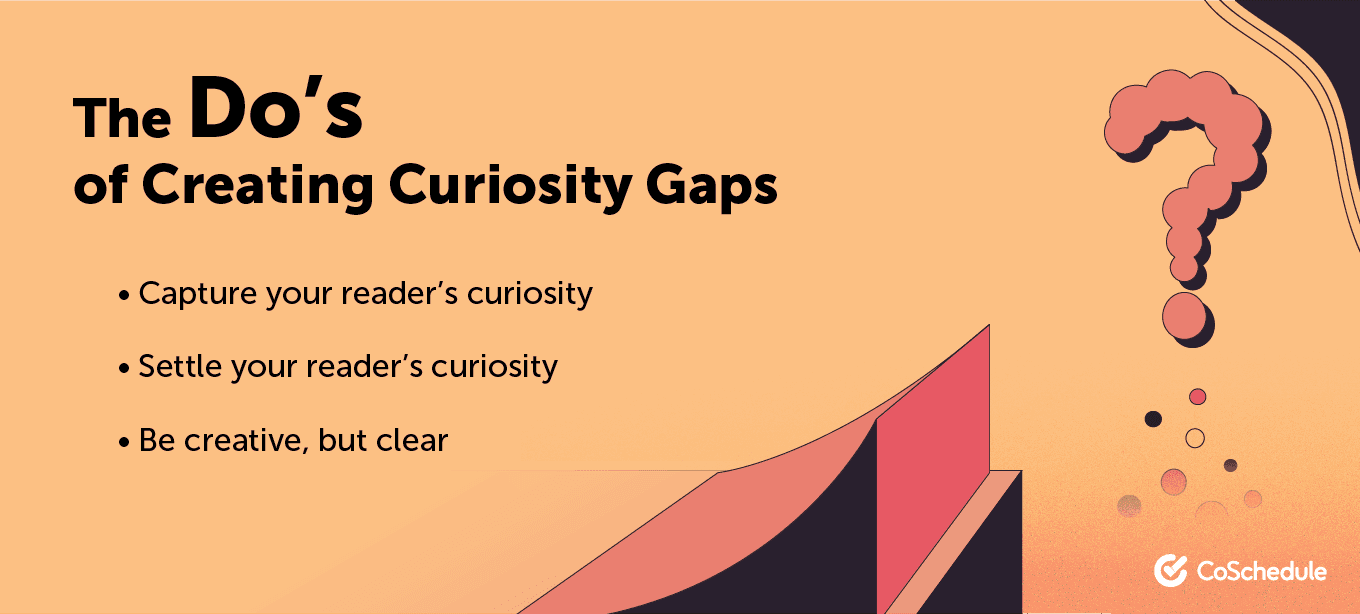
Using a curiosity gap as part of your content strategy is not always super straightforward. There are a few things to keep in mind when you decide to use them as your method to capturing the attention of an audience.
We’ll start with the obvious: you need to make your target audience curious — hence, the name. If your content doesn’t make someone scratch their head and think, “I have no idea, but I’d like to find out,” then you’re doing it wrong.
It’s important to leave things open-ended because then you’ve given yourself a nice platform to creatively resolve your audience’s curiosity throughout your content.
Next, you need to make you actually settle your audience’s curiosity. If you give them something unknown and then don’t give them the answer, you’ll completely lose their trust. This is where our previous discussion about clickbait comes into play. Never, and I mean never, trick your audience into falling for clickbait. This is the easiest way to lose your followers.
Finally, the last thing you should do to properly form a curiosity gap is to be creative but clear. Using the same old, cookie-cutter stuff in your curiosity gap will most definitely lose your audience’s interest.
Andrew Davis said it best:
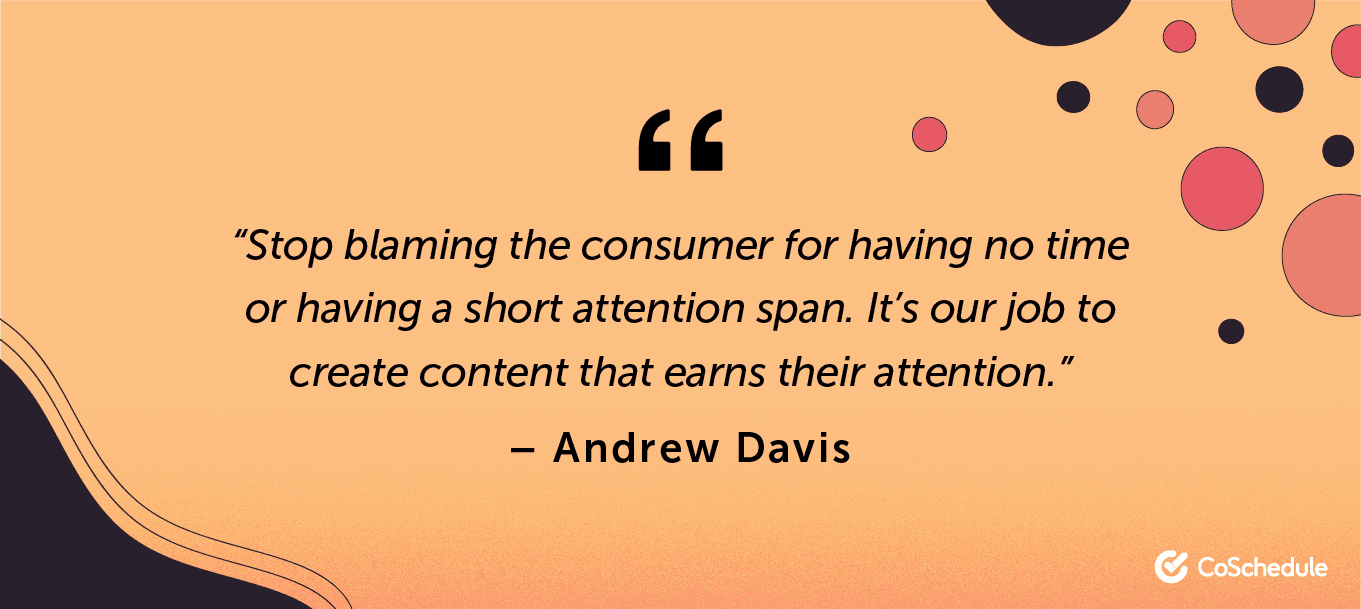
Attention isn’t just given to you, your content, or your brand; it needs to be earned.
What You Should Avoid
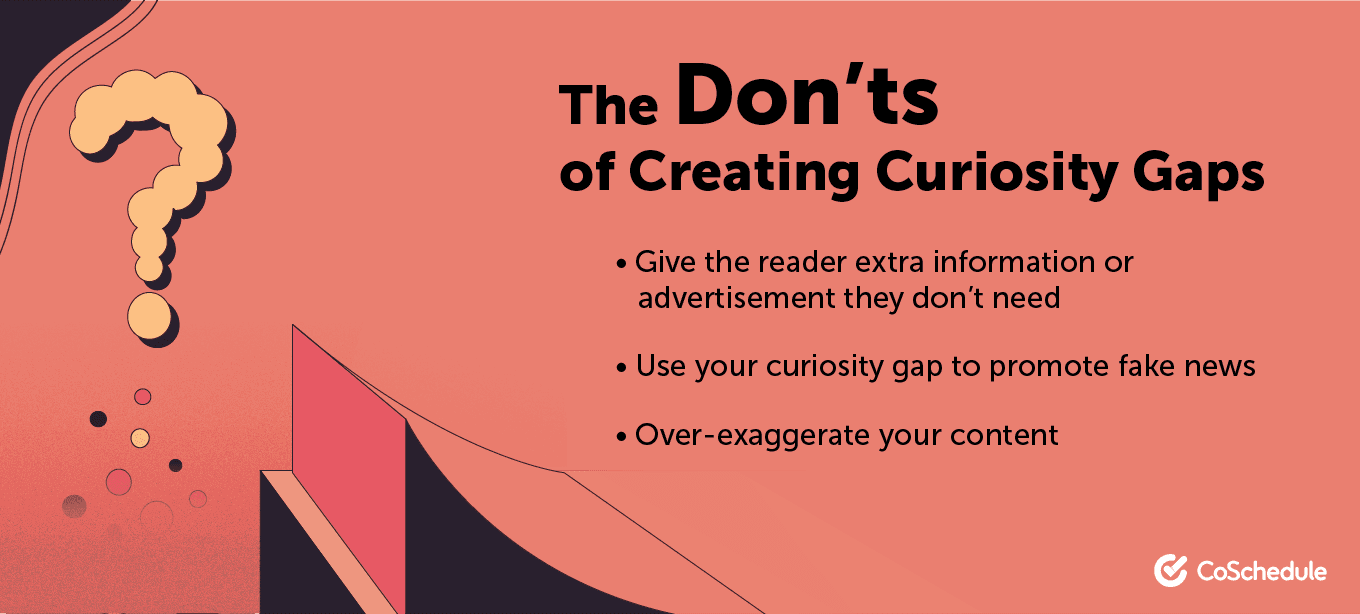
Let’s start this off our list of “don’ts” by referencing Andrew Davis’s quote about customer attention. With all of the information out there, and the updates that push through feed every second, there’s a window of only a few seconds to capture the attention of your audience.
That being said, it’s critical that you don’t give your audience extra information or advertisement that they won’t care about.
Why?
When someone is on a mission to find out the answer to a burning question — put there by your content — they don’t want to be roadblocked by flourishes of ads and extra fluff. They’re there for one purpose and one purpose only: to find an answer.
Our second and third “don’ts” will, again, put a spotlight on clickbait. Two things we really want to avoid with curiosity gaps are using this curiosity gap method to promote fake news and/or over exaggerating your content.
Promoting fake news is the easiest way to lose the authenticity of your brand and chase away any potential customers. When you promote anything that can’t be trusted, your audience will, in turn, not trust you. We don’t want that.
Over exaggerating your content goes hand-in-hand with this because if you hype up your company or content too much, you risk being untruthful.
Overall, just make sure you are honest, interesting, and brief when you decide to take on a curiosity gap as your next content strategy.
How to Apply Curiosity Gaps
There are a few ways to incorporate curiosity gaps into your content, like the CoSchedule headline examples we talked about previously. However, sometimes it can be really difficult to think of how to structure your headline or other content in a way that works best alongside the psychology of curiosity.
Take a peek at a simple formula our trusted friend, Andrew Davis, has constructed for making this content strategy as easy user-friendly as possible.
The Storybox Formula
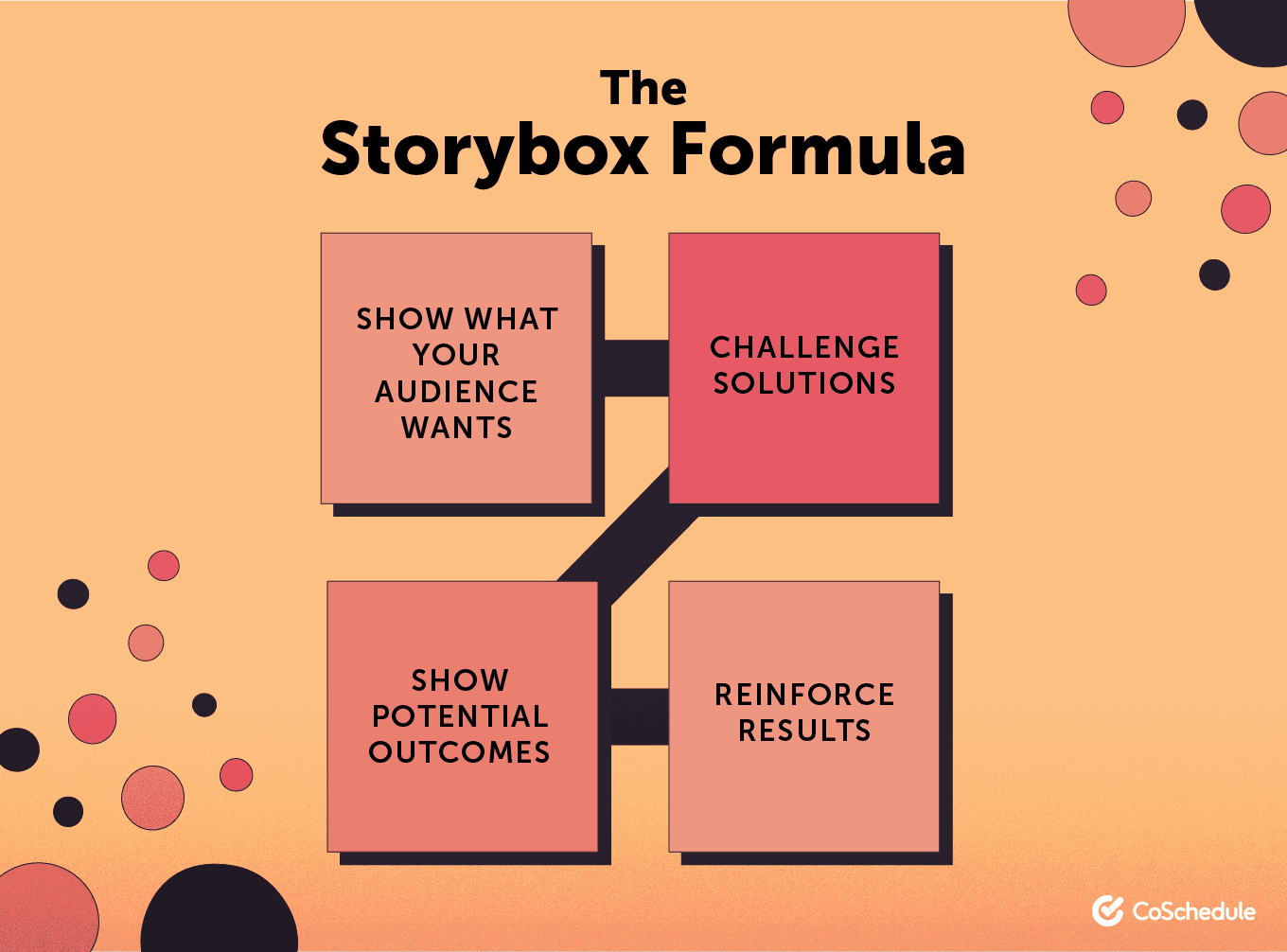
Davis has some great advice for how to effectively compose content curiosity gaps. The Storybox Formula, however, is a method that can be broken down into a few, easy-to-follow steps:
- Show what the audience wants: This is pretty straightforward, but you need to make sure you’re clearly showing the audience what service you are offering to them and how it can benefit them. They don’t want to see what your product or service is until you tell them how they can use it and how it helps them.
- Challenge solutions: Reassure your audience that you understand their problem, and then immediately follow up with the solution you can offer that will solve that problem.
- Show potential outcomes: Lay out what your solution will do for their end results. Here’s the trick: as Davis puts it, “delay the reveal.” As soon as your audience knows the answer, they won’t be paying attention anymore. Remember, you need to keep them curious!
- Reinforce results: Once you finally give your audience the solution they’re looking for, don’t forget to tell them why your solution is a good one. This goes hand-in-hand with showing the potential outcomes — except, this time, you’re giving them the actual solution.
Be sure to check out Andrew Davis’s podcast interview with CoSchedule to dig even deeper into this strategy.
Using CoSchedule’s Headline Analyzer Studio
The Headline Analyzer Studio is an easy-to-use tool that will have you cranking out your best headlines in no time.
The first step is entering your headline idea into the text box, and then clicking “Analyze Now”.

After this tool analyzes your headline, you’ll get tons of feedback about how your headline would perform and engage readers and where it might fall a little flat. The Headline Analyzer Studio will score your headline out of 100 — anything above a score of 70 will land you in the green, which is where we aim for our headlines at CoSchedule.
Some of the feedback you’ll see from the Headline Analyzer Studio will talk about your word balance, headline type, and your sentiment. Keep this feedback in mind while you continue to draft headline ideas and craft one that’s sure to make an impact.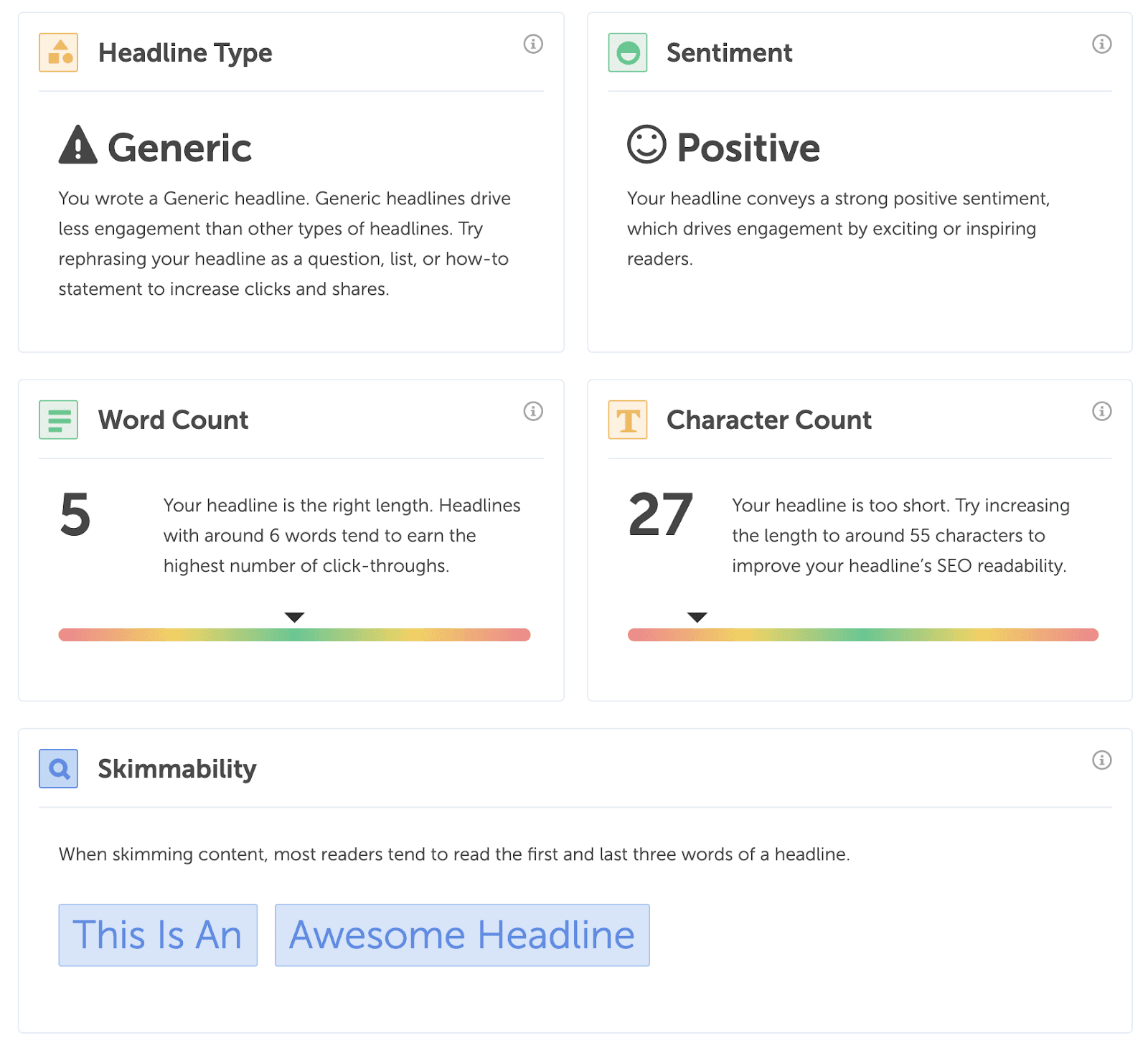
With our headline template bundle and this handy-dandy Headline Analyzer Studio tool in your marketing toolbelt, you’re prepped and ready to draft the next perfect headline.
It’s Your Turn
With that, I’ll leave you to try out this content strategy on your own. Don’t forget to take advantage of the downloadable headline template bundle, so you can make the most of your headlines and capture the attention of your target audience.
Happy writing!

